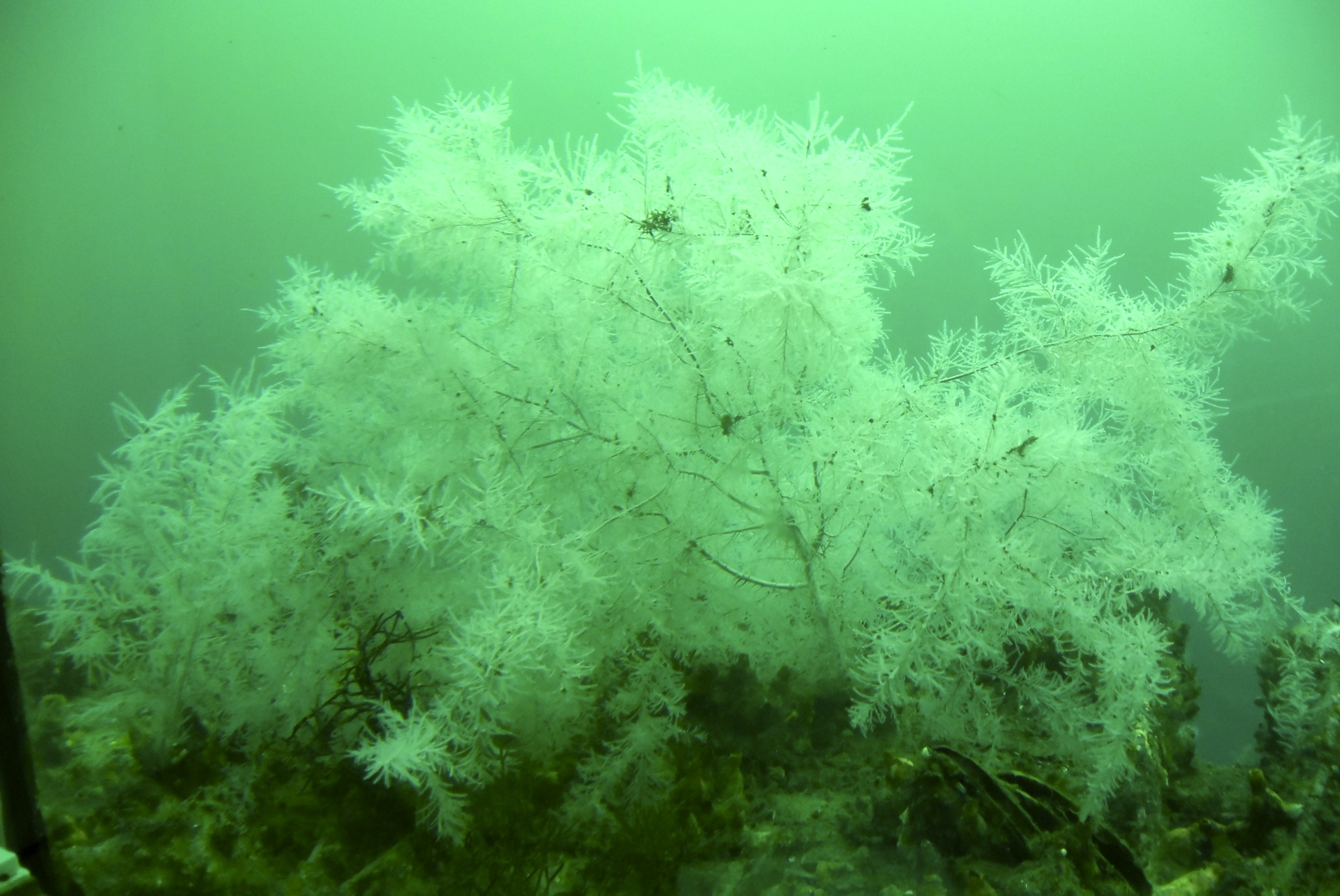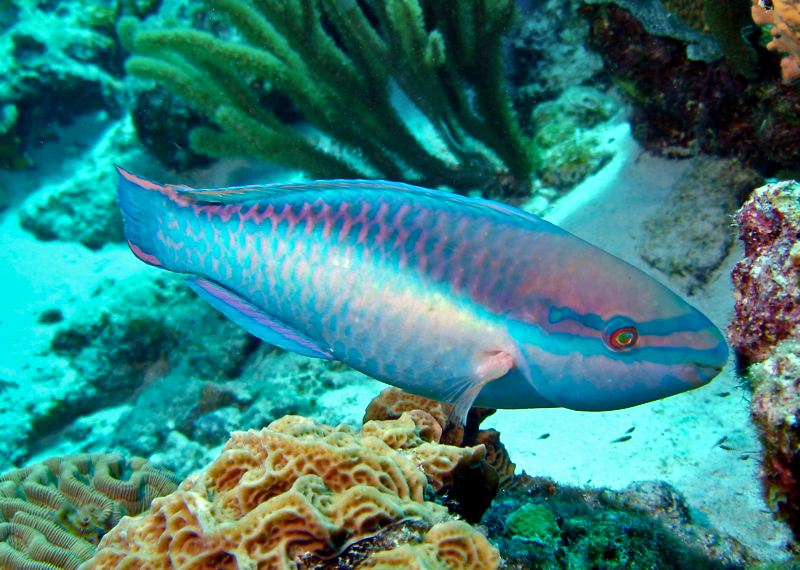|
Triacanthidae
Triacanthidae, commonly known as triplespines or tripodfishes, is a family of Indo-Pacific fishes. It is classified in the order Tetraodontiformes, along with the pufferfishes and the ocean sunfish. The family consists of seven species in four genera, in addition to one extinct genus that only is known from fossils. Much like their relatives the triggerfish and the filefish, the triplespines's first ray of the dorsal fin is formed to a spine. Further, they have two spines in place of their ventral fins. They have sharp and heavy teeth, which they use to eat hard-shelled molluscs and crustaceans. They also have the unique ability to see ultraviolet light. Their ability to see ultraviolet light is similar to the vision of Goldfish. Not much is known about how the fish live. They are essentially offshore fish that only come close to land occasionally. They range from in length. Fossil record The genus '' Acanthopleurus'' is known from the species ''A. serratus'' Agassiz, 1844 a ... [...More Info...] [...Related Items...] OR: [Wikipedia] [Google] [Baidu] |
Triacanthus Biaculeatus
''Triacanthus biaculeatus'', also known as the Short-nosed tripod fish, or Silver horse-fish is a species of marine fish in the family Triacanthidae Triacanthidae, commonly known as triplespines or tripodfishes, is a family of Indo-Pacific fishes. It is classified in the order Tetraodontiformes, along with the pufferfishes and the ocean sunfish. The family consists of seven species in four ge .... It is native to the Indian Ocean and the western Pacific Ocean. Its caudal fin is yellow. As the fish looks like a helicopter, it is locally known as the Helicopter fish in West Bengal.It has a long history providing food for the native culture. References Further reading *Arshad, A., Jimmy A., Amin N. S. M., Sidik J. B., & Harah Z. M. (2008). Length–weight and length–length relationships of five fish species collected from seagrass beds of the Sungai Pulai estuary, Peninsular Malaysia. Journal of Applied Ichthyology. 24(3), 328–329. *Santini, F., & Tyler J. C. (2002). Phylo ... [...More Info...] [...Related Items...] OR: [Wikipedia] [Google] [Baidu] |
Tetraodontiformes
The Tetraodontiformes are an order of highly derived ray-finned fish, also called the Plectognathi. Sometimes these are classified as a suborder of the order Perciformes. The Tetraodontiformes are represented by 10 extant families and at least 349 species overall; most are marine and dwell in and around tropical coral reefs, but a few species are found in freshwater streams and estuaries. They have no close relatives, and descend from a line of coral-dwelling species that emerged around 80 million years ago. Description Various bizarre forms are included here, all radical departures from the streamlined body plan typical of most fishes. These forms range from nearly square or triangular (boxfishes), globose ( pufferfishes) to laterally compressed ( filefishes and triggerfishes). They range in size from '' Rudarius excelsus'' (a filefish), measuring just in length, to the ocean sunfish, the largest of all bony fishes at up to in length and weighing over 2 tonnes. Most members ... [...More Info...] [...Related Items...] OR: [Wikipedia] [Google] [Baidu] |
Pseudotriacanthus
''Pseudotriacanthus strigilifer'', the long-spined tripodfish, is a species of Triacanthidae native to the Indian Ocean and the central western Pacific Ocean where it is found in coastal marine waters, also entering brackish waters in estuaries, at depths of from . This species grows to a length of TL though it more usually does not exceed TL. It is of minor commercial importance and is also found in the aquarium trade. This species is the only known member of its genus Genus ( plural genera ) is a taxonomic rank used in the biological classification of extant taxon, living and fossil organisms as well as Virus classification#ICTV classification, viruses. In the hierarchy of biological classification, genus com ....Matsuura, K. (2014): Taxonomy and systematics of tetraodontiform fishes: a review focusing primarily on progress in the period from 1980 to 2014. ''Ichthyological Research, 62 (1) 72-113.'' References Tetraodontiformes Taxa named by Alec Fraser-Brunner ... [...More Info...] [...Related Items...] OR: [Wikipedia] [Google] [Baidu] |
Triacanthus
''Triacanthus'' is a genus in tripod fish family (Triacanthidae) native to the Indian Ocean and the western Pacific Ocean. Species There are currently 2 recognized species in this genus:Matsuura, K. (2014): Taxonomy and systematics of tetraodontiform fishes: a review focusing primarily on progress in the period from 1980 to 2014. ''Ichthyological Research, 62 (1): 72-113.'' * ''Triacanthus biaculeatus'' Bloch, 1786 (Short-nosed tripodfish) * '' Triacanthus nieuhofii'' Bleeker Bleeker is a Dutch occupational surname. Bleeker is an old spelling of ''(linnen)bleker'' ("linen bleacher"). [...More Info...] [...Related Items...] OR: [Wikipedia] [Google] [Baidu] |
Tripodichthys
''Tripodichthys'' is a genus in the tripod fish family (Triacanthidae) native to the Indian Ocean and the western Pacific Ocean. Species There are currently 3 recognized species in this genus:Matsuura, K. (2014): Taxonomy and systematics of tetraodontiform fishes: a review focusing primarily on progress in the period from 1980 to 2014. ''Ichthyological Research, 62 (1): 72-113.'' * '' Tripodichthys angustifrons'' Hollard, 1854 (Black-flag tripodfish) * '' Tripodichthys blochii'' Bleeker, 1852 (Long-tail tripodfish) * '' Tripodichthys oxycephalus'' Bleeker Bleeker is a Dutch occupational surname. Bleeker is an old spelling of ''(linnen)bleker'' ("linen bleacher"). [...More Info...] [...Related Items...] OR: [Wikipedia] [Google] [Baidu] |
Trixiphichthys
''Trixiphichthys weberi'', the blacktip tripodfish, is a species in the tripod fish family (Triacanthidae) native to the tropical Indian and western Pacific Oceans. It is of minor commercial importance to local fisheries. This species grows to a length of TL. This species is the only known member of its genus Genus ( plural genera ) is a taxonomic rank used in the biological classification of extant taxon, living and fossil organisms as well as Virus classification#ICTV classification, viruses. In the hierarchy of biological classification, genus com ....Matsuura, K. (2014): Taxonomy and systematics of tetraodontiform fishes: a review focusing primarily on progress in the period from 1980 to 2014. ''Ichthyological Research, 62 (1): 72-113.'' References Tetraodontiformes Taxa named by Alec Fraser-Brunner Monotypic marine fish genera {{Tetraodontiformes-stub ... [...More Info...] [...Related Items...] OR: [Wikipedia] [Google] [Baidu] |
Indonesia
Indonesia, officially the Republic of Indonesia, is a country in Southeast Asia and Oceania between the Indian and Pacific oceans. It consists of over 17,000 islands, including Sumatra, Java, Sulawesi, and parts of Borneo and New Guinea. Indonesia is the world's largest archipelagic state and the 14th-largest country by area, at . With over 275 million people, Indonesia is the world's fourth-most populous country and the most populous Muslim-majority country. Java, the world's most populous island, is home to more than half of the country's population. Indonesia is a presidential republic with an elected legislature. It has 38 provinces, of which nine have special status. The country's capital, Jakarta, is the world's second-most populous urban area. Indonesia shares land borders with Papua New Guinea, East Timor, and the eastern part of Malaysia, as well as maritime borders with Singapore, Vietnam, Thailand, the Philippines, Australia, Palau, and India ... [...More Info...] [...Related Items...] OR: [Wikipedia] [Google] [Baidu] |
Northern Australia
The unofficial geographic term Northern Australia includes those parts of Queensland and Western Australia north of latitude 26° and all of the Northern Territory. Those local government areas of Western Australia and Queensland that lie partially in the north are included. Although it comprises 45% of the total area of Australia, Northern Australia has only 5% of the Australian population (1.3 million in 2019). However, it includes several sources of Australian exports, being coal from the Great Dividing Range in Queensland/New South Wales and the natural gas and iron ore of the Pilbara region in WA. It also includes major natural tourist attractions, such as Uluru (Ayers Rock), the Great Barrier Reef and the Kakadu National Park. Geography and climate Almost all of Northern Australia is a huge ancient craton that has not experienced geological upheaval since the end of the Precambrian. The only exception to this generalisation is the Wet Tropics of northern Queensla ... [...More Info...] [...Related Items...] OR: [Wikipedia] [Google] [Baidu] |
Black Coral
Antipatharians, also known as black corals or thorn corals, are an order of soft deep-water corals. These corals can be recognized by their jet-black or dark brown chitin skeletons, surrounded by the polyps (part of coral that is alive). Antipatharians are a cosmopolitan order, existing at nearly every location and depth, with the sole exception of brackish waters. However, they are most frequently found on continental slopes under deep. A black coral reproduces both sexually and asexually throughout its lifetime. Many black corals provide housing, shelter, food, and protection for other animals. Black corals were originally classified in the subclass Ceriantipatharia along with ceriantharians (tube-dwelling anemones), but were later reclassified under Hexacorallia. Though they have historically been used by Pacific Islanders for medical treatment and in rituals, its only modern use is making jewelry. Black corals have been declining in numbers and are expected to continue d ... [...More Info...] [...Related Items...] OR: [Wikipedia] [Google] [Baidu] |
Acanthopleurus
''Acanthopleurus'' is an extinct genus of prehistoric bony fish that lived during the early Oligocene epoch. See also * Prehistoric fish * List of prehistoric bony fish A ''list'' is any set of items in a row. List or lists may also refer to: People * List (surname) Organizations * List College Albert A. List College of Jewish Studies, known simply as List College, is the undergraduate school of the J ... References Oligocene fish Paleogene fish of Europe Fossil taxa described in 1843 {{tetraodontiformes-stub ... [...More Info...] [...Related Items...] OR: [Wikipedia] [Google] [Baidu] |
Male
Male (symbol: ♂) is the sex of an organism that produces the gamete (sex cell) known as sperm, which fuses with the larger female gamete, or ovum, in the process of fertilization. A male organism cannot reproduce sexually without access to at least one ovum from a female, but some organisms can reproduce both sexually and asexually. Most male mammals, including male humans, have a Y chromosome, which codes for the production of larger amounts of testosterone to develop male reproductive organs. Not all species share a common sex-determination system. In most animals, including humans, sex is determined genetically; however, species such as ''Cymothoa exigua'' change sex depending on the number of females present in the vicinity. In humans, the word ''male'' can also be used to refer to gender in the social sense of gender role or gender identity. Overview The existence of separate sexes has evolved independently at different times and in different lineages, an example ... [...More Info...] [...Related Items...] OR: [Wikipedia] [Google] [Baidu] |
Female
Female (Venus symbol, symbol: ♀) is the sex of an organism that produces the large non-motile ovum, ova (egg cells), the type of gamete (sex cell) that fuses with the Sperm, male gamete during sexual reproduction. A female has larger gametes than a male. Females and males are results of the anisogamous reproduction system, wherein gametes are of different sizes, unlike isogamy where they are the same size. The exact mechanism of female gamete evolution remains unknown. In species that have males and females, Sex-determination system, sex-determination may be based on either sex chromosomes, or environmental conditions. Most female mammals, including female humans, have two X chromosomes. Female characteristics vary between different species with some species having pronounced Secondary sex characteristic, secondary female sex characteristics, such as the presence of pronounced mammary glands in mammals. In humans, the word ''female'' can also be used to refer to gender i ... [...More Info...] [...Related Items...] OR: [Wikipedia] [Google] [Baidu] |


